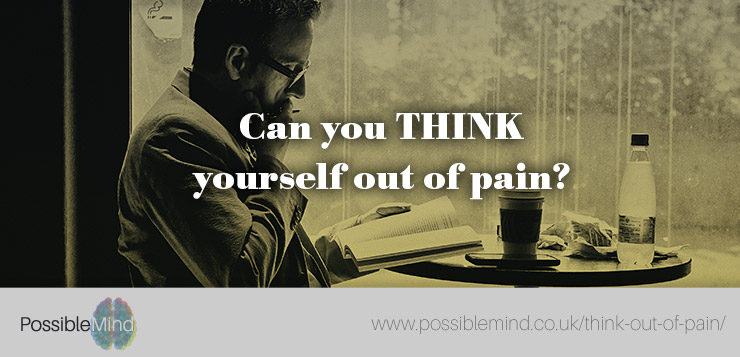Doctor claims these five simple exercises can ease discomfort – from practising ‘3-4-5 breathing’ to writing down positive thoughts
Is it possible to think yourself out of pain? That’s what one doctor with more than 20 years’ experience believes.
Dr Deepak Ravindran, clinical lead for pain medicine at the Royal Berkshire Hospital, in Reading, has spent more than two decades specialising in acute and chronic pain management.
He has found what he believes is a compelling link between an individual’s mental state and the severity of pain experienced.
‘In the last 15 to 20 years that has been emerging understanding about the neuroscience and the study of the brain and the spinal cord using advanced MRI techniques that actually give scientific proof that the mind and body are one,’ he explained to FEMAIL.
‘In certain conditions like chronic pain, the research actually proves mind body techniques can be as effective as compared to traditional techniques like medications and surgery.’
These mental practices might not entirely cure an individual of pain but they can certainly help. In some instances more effectively than traditional medical interventions.
He continued: ‘We now understand the phenomenon of neuroplasticity which is the ability of the brain and the nerves to be plastic and rewire itself in a way that it can overcome the pain.
‘Alongside this we realise the role and contribution of lifestyle and personality driven by genes, and indeed they might combine with environmental factors that can trigger a particular gene in unwanted ways.’
Dr Ravindran outlines his method in his book, The Pain-Free Mindset. Here, he shares five practical tips on how you can begin to take control of your pain:
Activate your ‘internal safety system’ with ‘3-4-5 breathing’
One of the most reliable and easily controllable ways of activating the safety system (the parasympathetic system) is breathing.
When we can breathe out longer than we breathe in, it can activate the safety system much more predictably and provide the brain reassurance that all is safe.
A simple way to incorporate a breathing technique is a 3-4-5 approach where you would breathe in for three seconds, hold your breath for four seconds, and then breathe out for five seconds.
Even practising this for two to five minutes will help you take between 10 to 20 breaths which can often help in calming the nervous system down significantly.
Another technique which can be easy to start with is the 5-5-5 technique which would involve 5 seconds of breathing in, five seconds to hold, and then five seconds of breathing out.
Focus on a word, phrase or object
One technique to try to relax is to focus on a word, phase or object – a response written about by Howard cardiologist and mind body professor Herbert Benson.
This aims to achieve a state of flow or focused awareness of ourselves by using a repeated word, phrase or an action.
The use of Christian rosaries or the Hindu ‘jap mala’ are examples of object focus.
This allows the nerves of our brain to move from what is called a default network to a different set of nerve circuits called the flow circuits.
This can then help in relaxing the nervous system and hence reduce physical pain.
Try yoga or Tai Chi
Both yoga and Tai Chi, also known as mind-body techniques, are now increasingly popular.
The exercises are already in the mainstream with GPs and hospital doctors recommending the tasks for different conditions and different age groups.
There are also now studies indicating that yoga and Tai Chi can benefit and cause pain relief.

Both exercises embrace the concept that pain can be present both in the mind and body and relieved by rhythmic slow movements.
Yoga and Tai Chi can help in controlling breath as well as stretching deconditioned muscles and improving them.
There are many videos and apps that can help you get started, while local gyms and healthcare centres may also have classes available. These can be of big benefit.
Practise mindfulness
Try to adopt a passive non-judgmental compassionate attitude to your thoughts because this is core to the concept of mindfulness based stress reduction.
This technique has got a very good evidence base for management of chronic pain using mind/body approaches.

There is now good scientific proof to suggest that when people are good mindful meditators, then there are positive changes in their nerves.
A mindfulness based practise does not have to be only about meditation.
It can be any physical activity that patients feel safe and like to do – whether that is eating, running, jogging or going to gym.
Be selective in the language you use… even when thinking
Evidence has shown that the kind of language we use can be very powerful in shaping our thoughts, and therefore our behaviours and actions.
This is important because the language we use and stories we say can cause unsafe thoughts and actions, which can result in activating our immune system.
This activation of the immune system can release chemicals that can cause a flare up of chronic pain circuits in many different parts of the brain.
Journaling your positive thoughts the beginning of the day and also noting down a few points that you are thankful for are also examples of positive thinking that can change your mindset and reduce pain.dr
Ultimately many mind body techniques are being used to relieve pain and they all now take advantage of the principle of neuroplasticity.
The increasing success of these techniques show that this can be safe and sustainable long term strategies to overcome pain and in some cases become pain free
This article was written by Stephanie Linning and was first published on www.dailymail.co.uk on 9th August 2022.
If you like this post you will also enjoy:
- Like War, Illness and Pain are Not Bad.
- The Body Knows How To Heal Itself.
- Unlikely, but still possible.
- Mind Power and Belief for Recovery and Healing.
- How Athletes Recover Quicker Using Mind Power.
- The Healing Power of Illness Book Overview.
Further Reading:






